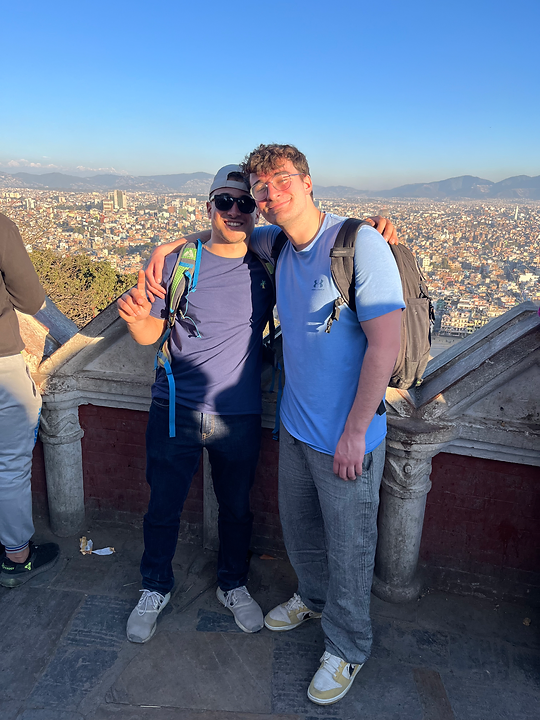

The past week has been filled with classes, climbing, and excursions to Kathmandu’s most famous historical sites. I feel that I have a better academic understanding of Buddhism and Nepal, but there is still an unimaginable amount of knowledge to embrace. Many people don’t know that Kathmandu was separated into three kingdoms: Bhaktapur, Kathmandu, and Patan. I could go on and on about the richness of Kathmandu’s history and culture, however, I want to reflect on what has been most impactful this week, and what has been most influential throughout my life, climbing.
Since coming to Kathmandu, I have become a member of the Crimpanzee Adventure Hub, which hosts one of Kathmandu’s top climbing facilities. Many of the gym’s members are Sherpas, an ethnic group from the Everest region of Nepal. Westerners commonly mistake the word sherpa for a mountain guide, whereas the word actually refers to a group of people.

Climbing regularly at a gym in Kathmandu and training with some of the most elite mountain climbers in the world is a dream come true. I’ve had many conversations with my new friends at the gym about famous Himalayan peaks. When I bring up mountains like Everest and K2, the response I have gotten is, “oh yeah I did K2 last summer,” or, “yeah I’ve done Everest multiple times.” Hearing these responses are mind-blowing, and the crazier thing is that these are my new friends. I am so thankful for how welcoming and friendly everyone has been to me. There is something truly beautiful about this sport.

I have always conceptualized climbing as a beautiful thing, but I have never thought about what that beauty is. My Buddhist Khenpo professor spent some time in class talking about Mt. Everest- which in Nepal is called Sagarmatha, meaning goddess of the sky. Khenpo mentioned how Buddhist think it’s strange how climbers go through so much pain and suffering just to stand on top of a mountain for a few minutes. Khenpo didn’t mean that climbing mountains are inherently bad, but that different cultures have varying perspectives on how one should conduct life’s ambitions. He mentioned how climbers and monks can mutually benefit from each other by learning to be compassionate and open-minded to others’ beliefs and values.
This class discussion got me thinking about why I climb and the beauty in it. Rationally speaking, it makes no sense why people would risk their lives climbing mountains and go through so much pain just to stand on a summit for a few minutes. The classic response is that people do it for the view, and I was reminded of this by a local restaurant’s quote on the wall, which said, “the best views come after the hardest climbs.” Naturally, part of the reason we climb is for the views- no one can deny that- and I agree that the most clarity in our lives is found after we overcome troubling times. But, what is the deeper beauty in climbing other than picturesque landscapes? There must be more to uncover if people fall asleep dreaming of that next climb. Via climbing, I have learned that euphoria is experienced beyond the five senses. Climbing requires both mental and physical perseverance. It takes a certain level of psych and physical strength to keep you going, and also a level of calmness and relaxation to prevent burnout. There is a balance between the mental and physical, rage and tranquility, seriousness and goofiness, etc. If one reaches the summit, top of the wall, or point of destination, then they have found the balance.
I think Sir Edmund Hillary, the first man to climb Everest along with Tenzing Norgay, got it right when he said “it’s not the mountain we conquer, but ourselves.” The beauty of climbing is more than pretty views, it’s the way we learn to better cultivate ourselves and others along the trail. Although, this is not an exhaustive definition of climbing’s beauty. When asked why Hillary was attempting Everest, he replied, “because it’s there.” This response still remains a mystery, but despite its mysteriousness, I think every climber knows what Sir Edmund Hillary was trying to capture.
